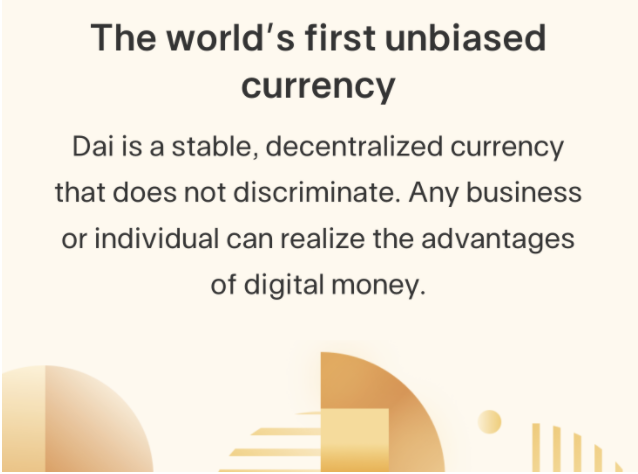How to Learn About and Get Involved with DeFi Communities
June 29, 2021

Crypto debit cards connect blockchain tech and digital assets to traditional payments systems simply by tapping into the existing Visa and Mastercard infrastructure. By integrating Dai into widely used debit cards, users can hold Dai, earn savings via the Dai Savings Rate (DSR), retain the flexibility of transferring and trading Dai frictionlessly, and, of course, use Dai to make real-world payments. And that’s just the beginning. Integration of Dai into these cards means integration of the Maker Protocol and the facilitation of attractive new financial services.
While crypto is gaining in popularity, it still suffers from a “last mile” problem: It’s easy to store, transfer, and trade, but far harder to spend in the real world. As a stablecoin pegged to the US Dollar, one of the most powerful use cases for Dai is payments.
The integration of Dai with debit cards provides an essential bridge between crypto and the traditional financial world, allowing anyone to use Dai in their day-to-day spending. Using Visa or Mastercard’s networks makes spending crypto as easy as tapping or swiping a debit card.
“Currencies only work at scale,” explains Gustav Arentoft, a Maker Foundation Business Development Associate in Europe. “You can’t just take any currency in the world— crypto or fiat—and pay with it in a store. But, what’s incredible about a crypto debit card is that it’s hooked into traditional payment rails. So, Dai, for example, can be spent very easily, everywhere major cards are accepted.”
A number of crypto companies now provide a debit Visa or Mastercard, helping to close the gap between the crypto and fiat worlds. And they are becoming increasingly popular.
Most companies that offer crypto debit cards also provide other services that help to facilitate everyday payments, such as wallets, trading, and gateways between fiat and cryptocurrencies. Because Visa and Mastercard haven’t yet committed to processing crypto payments directly, these companies act as a kind of middleware. They take on responsibility for compliance and exchanging the crypto for fiat, while the card providers bring their global payment networks to the table.
In most cases, the companies that offer crypto debit cards provide secure custody for crypto assets, with a couple of notable exceptions. UK-based Monolith provides non-custodial storage for Dai and other cryptocurrencies, and offers an easy way to move funds safely from DeFi into real-world payments. Germany-based Bitwala also offers non-custodial storage.
Other major options for Dai users include:
A crypto debit card is a prepaid debit card that users can top-up on demand. Different companies will offer different features, but generally, the premise is the same: After depositing their cryptocurrency to a dedicated address provided by the card platform, users simply exchange those assets for the currency of their choice before they can spend money.
Applying for and setting up a card varies depending on offerings, such as rewards, and place of residence.
In Europe, the Wirex card is popular. In 2018, the company introduced the IBAN (International Bank Account Number) function, which allows for smoother cross-border payments. Because the IBAN standard is popular overseas, European users can even receive their salaries and other payments to those accounts. Learn more about applying and managing a Wirex card here.
In the U.S., where crypto card options are slim, Crypto.com is gaining traction. Users can choose between tiered reward card options. Everything you need to know about applying is here, including information about MCO staking and rewards, and completing the “Know Your Customer” (KYC) process.
Some neo-banks (small, typically online-only banks) have introduced a card process that’s even simpler, allowing users to hold a balance of one fiat currency that is converted to the required currency (at inter-bank rates) at each point of transaction. “Cards that offer automatic conversion are commonly called frictionless travel cards, because users never have to worry about exchange fees or manual conversion of funds,” says Arentoft. “No one has introduced this type of service for crypto cards, but if someone does, it will enable completely seamless spending from a Dai or other crypto balance.”
Crypto debit cards offer an easy off-ramp to digital currencies, enabling users to spend them anywhere in the world major cards are accepted. But imagine being able to do even more with them. Envision earning on the crypto you hold on the card via the Dai Savings Rate and borrowing against one crypto to generate another. Then imagine using your crypto card to pay for dinner with friends in the currency required by the restaurant.

This is the future of financial services, where the Maker Protocol, integrated into a bevy of DeFi products and services, acts as a decentralized infrastructure. “Because the Maker Protocol and Dai are composable, they can be easily merged with fintech innovations,” explains Arentoft. “Awesome new crypto functionality will be combined with sleek user experiences. ”
Through the Maker Protocol, it is already possible for users to generate Dai in a few clicks, earn on Dai held, and exchange Dai for other crypto assets. Dai-enabled debit cards are fantastic additions to the Maker and DeFi ecosystems, helping anyone spend their Dai wherever major debit and credit cards are accepted.
Get Dai and explore some of the great debit card options available!